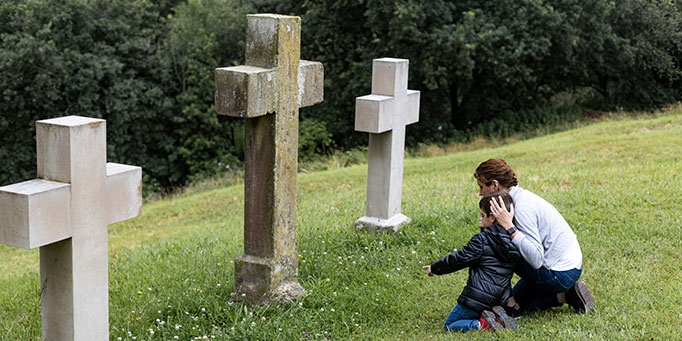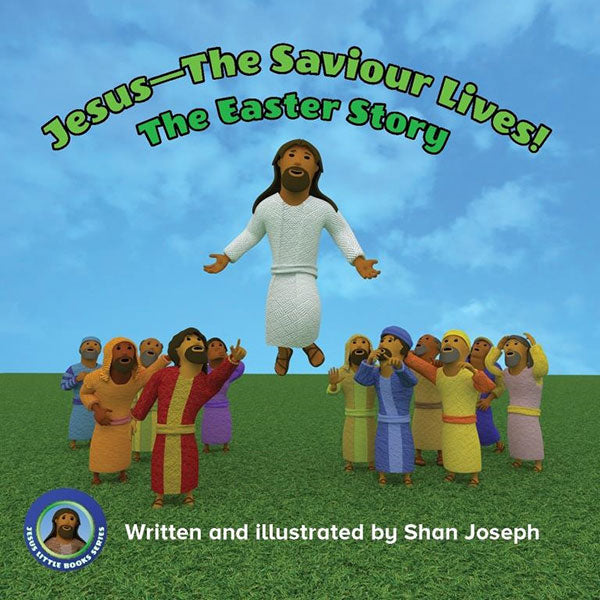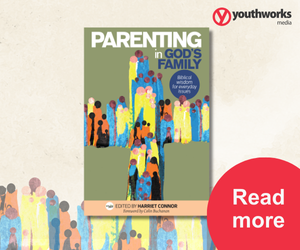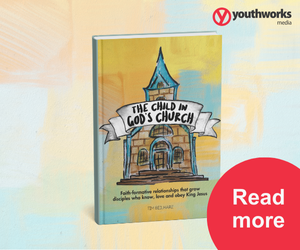
Today’s a good day to talk about death
Advice for addressing this important topic with our kids.
It’s impossible to avoid the topic of death in a Christian family. I mean, the very symbol of our faith is a Roman instrument of execution. The gospel we proclaim begins with ‘Jesus died for our sins’ (see 1 Corinthians 15:3–8), which is what we remember today on Good Friday.
Of course, the Easter story has a happy ending: we can’t explain Jesus’ death without celebrating the victory and hope of his resurrection. But Good Friday is the perfect opportunity for us and our children to sit with the real sadness of death, without rushing to ‘cheer up’ the conversation. Easter Sunday is still two days away.
Death is a fact of life
Secular bereavement counsellors Mal and Dianne McKissock, in their book Coping with Grief (HarperCollins Australia, 2018), give this advice:
‘Parents should ideally teach their children about death as they teach them language and facts about the natural world of which we are all part. They can be shown dead or dying plants, insects, birds and animals … We can help them to become familiar with the word ‘dead’, not euphemisms, and to develop a sense of reverence for all life and respect for what has died.’
They warn that phrases like ‘lost’ ‘asleep’ or ‘passed away’ will be interpreted literally and cause confusion. If we call death ‘sleep’, children may also become anxious about closing their own eyes at bedtime. Children’s questions about death should always be welcomed and answered using simple, age-appropriate language.
The McKissocks explain that children will learn how to deal with death from watching the behaviour of their parents and other adults. But they will also express grief in their own ways. Some children cry privately because they are embarrassed; others will hold onto their feelings, but may overreact to a minor event later on; others will act up or seek attention; still others don’t appear to be sad at all. All of these responses to death are normal for children.
Keep it simple
When we’re teaching children about the death of Jesus, it’s best to focus on the meaning of Jesus’ death, rather than the gory details. Ed Drew explains:
‘There is no need to shock children with Jesus’ horrendous floggings, his humiliation and eventual death. None of it will help children to understand Easter better. Children do not engage emotionally as adults do. Instead, children need to be told the simple facts and the simple explanation of the first Easter, in an engaging way. For instance, we can helpfully say that ‘Jesus died on a cross’; there is no need to say that ‘Jesus was nailed to a cross’ and no need to use words like ‘killed’, ‘murdered’ or ‘flogged’.
Death is sad
When someone or something (like an animal) dies, it is natural for our children to feel sad, however they might express it. We can validate their feelings: our sadness shows how wrong death is—that it wasn’t part of God’s original design for people.
I love the story of Jesus and his friend Lazarus, who had become sick and died. Jesus knew that Lazarus was going to rise again (he was about to make it happen!), but he still allowed himself to feel the weight and sadness of death. John describes the emotional scene:
‘When Mary reached the place where Jesus was and saw him, she fell at his feet and said, “Lord, if you had been here, my brother would not have died”.
When Jesus saw her weeping, and the Jews who had come along with her also weeping, he was deeply moved in spirit and troubled. “Where have you laid him?” he asked.
“Come and see, Lord”, they replied.
Jesus wept.
Then the Jews said, “See how he loved him!”’ (John 11:32–36)
When we are talking about death with our children, it’s OK for us to be sad and cry, just like Jesus did.
Death is (probably) far off
While it’s good to face the reality of death with our children, we also need to reassure them that in all likelihood, we and they have many more years to enjoy together on earth. Children may start to worry about us dying and leaving them without parents in the world. Our response needs to strike a balance. We cannot promise that nothing bad will ever happen to us—we have to trust that God would send people to look after our children if we died. And yet, we can reassure our children that we are doing everything we can to stay healthy and safe so that we will live to see them grow up and maybe even have children of their own. Many of us can point to the example of their grandparents to show that (in our country at least) most people do live until their children reach adulthood.
There is hope
As Christians, our grief is never without a glimmer of hope. As Paul writes:
‘Brothers and sisters, we do not want you to be uninformed about those who sleep in death, so that you do not grieve like the rest of mankind, who have no hope. For we believe that Jesus died and rose again, and so we believe that God will bring with Jesus those who have fallen asleep in him.’ (1 Thessalonians 4:13–14)
As we tell our children the joyous news of what happened that first Easter Sunday—Jesus came back to life!—we can also reassure them that anyone who follows Jesus will rise from the dead just as he did. One day, we will be reunited with all those who have died in the hope of Jesus. The wonderful news of Easter is that death, humanity’s oldest and greatest enemy, has been defeated forever by King Jesus. Today is Good Friday … but Sunday is coming!
---
Harriet Connor is the Content Editor for Growing Faith and the author of Families in God's Plan: 12 Foundational Bible Studies and Big Picture Parents: Ancient Wisdom for Modern Life (Wipf and Stock, 2017). She lives on the Central Coast of NSW with her husband and four sons.

Jesus—The Saviour Lives! The Easter Story
Jesus–The Saviour Lives! teaches children that, through Jesus' great sacrifice, we can be friends with God forever! A perfect gift this Easter!
For more articles from Growing Faith, subscribe to our monthly e-newsletter.
To hear about the latest books and resources from Youthworks Media, subscribe here.








